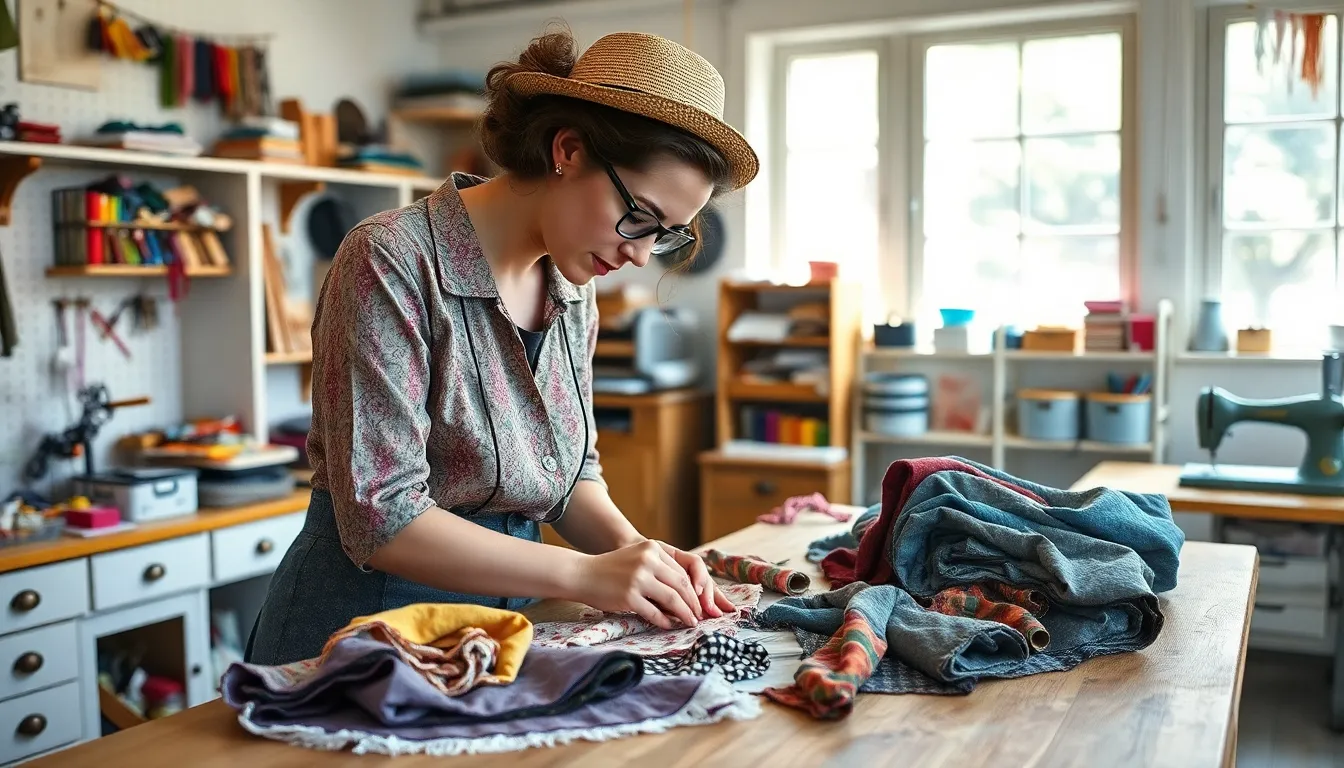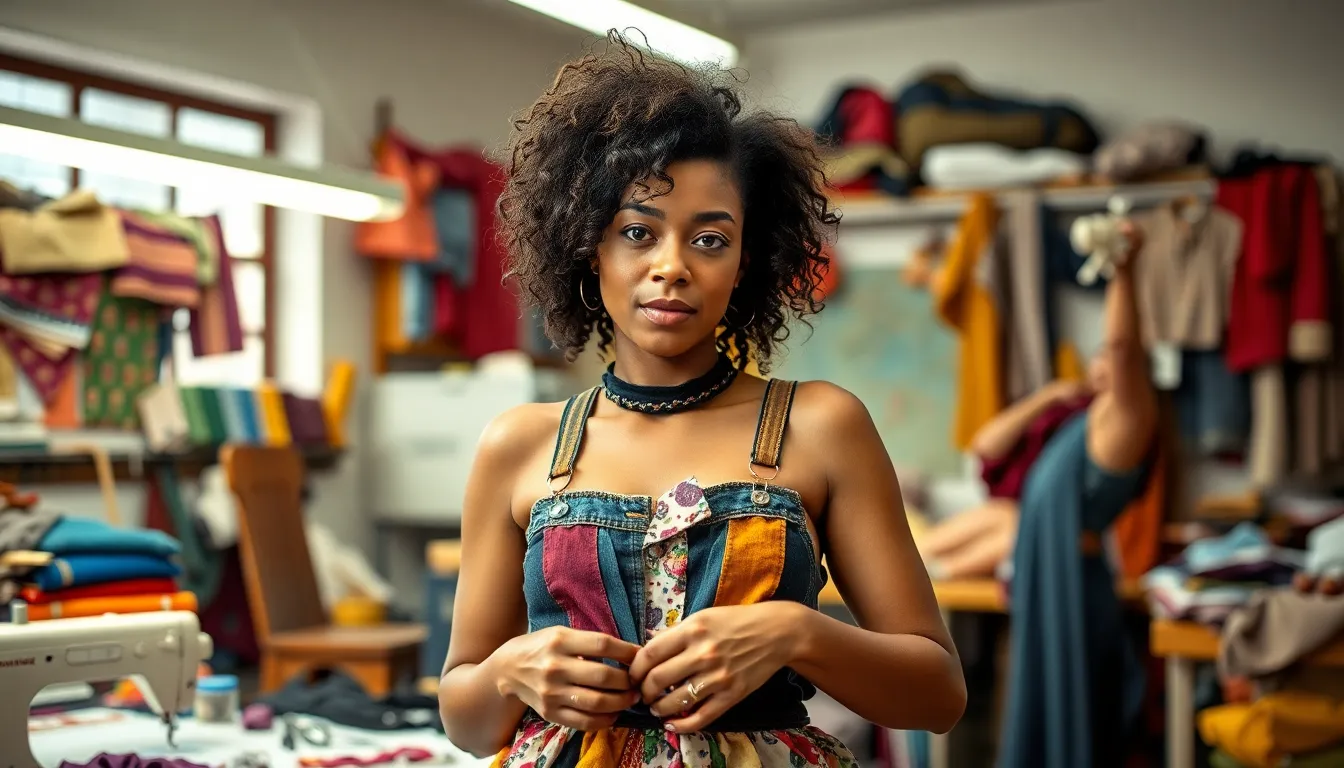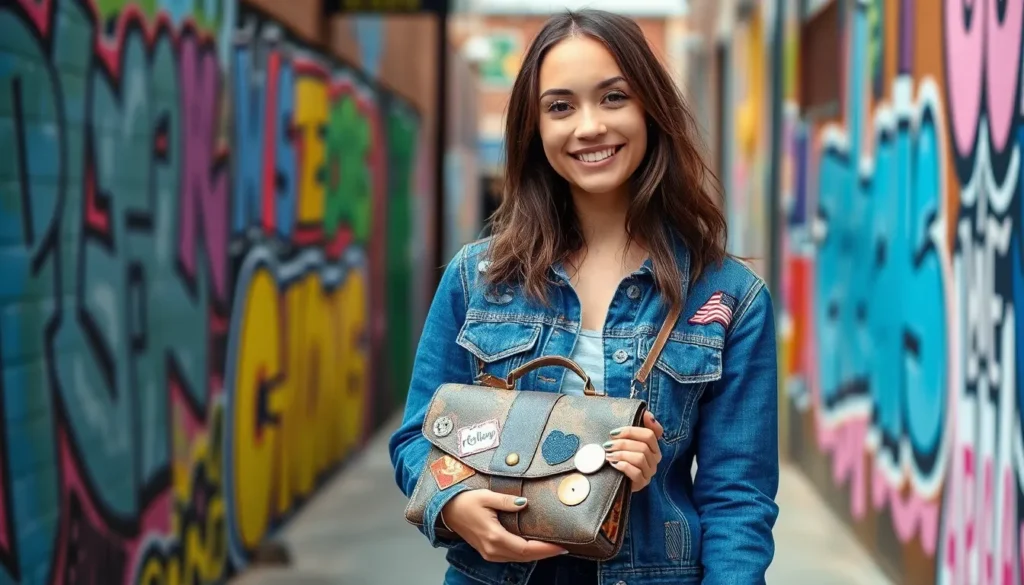Upcycled fashion is transforming the way people think about clothing and sustainability. By creatively repurposing old garments and materials, designers breathe new life into discarded items, reducing waste and promoting eco-conscious choices. This innovative approach not only helps the environment but also results in unique, one-of-a-kind pieces that reflect personal style and creativity.
As consumers become more aware of the fashion industry’s environmental impact, upcycled fashion has gained traction. It challenges the fast-fashion model, encouraging a shift towards mindful consumption. With a growing community of designers and brands championing this movement, upcycled fashion is proving that style and sustainability can go hand in hand.
Table of Contents
ToggleUnderstanding Upcycled Fashion
Upcycled fashion involves creatively transforming discarded textiles and garments into new, stylish pieces. This approach highlights sustainability while promoting unique fashion expressions.
Definition and Concept
Upcycled fashion refers to reusing and repurposing pre-existing materials to create new apparel or accessories. This practice turns waste into valuable products, often incorporating innovative design techniques. It diverges from traditional recycling by maintaining the original materials’ integrity, showcasing their character in a new context.
Importance and Benefits
Upcycled fashion presents numerous advantages:
- Waste Reduction: It directly reduces textile waste by diverting items from landfills.
- Resource Conservation: Upcycling minimizes the demand for new raw materials, conserving resources and energy.
- Unique Style: Each upcycled piece offers individuality, differentiating it from mass-produced clothing.
- Environmental Impact: It lowers the carbon footprint of fashion, promoting eco-friendliness through mindful consumption.
- Support for Local Artists: Many upcycled brands emphasize artisan craftsmanship, empowering local creatives and fostering community sustainability.
These benefits illustrate upcycled fashion’s essential role in the broader movement toward sustainable practices in the fashion industry.
Materials Used in Upcycled Fashion


Upcycled fashion utilizes a variety of materials to create innovative designs while promoting sustainability. Understanding these materials enhances appreciation for the craftsmanship involved in this movement.
Commonly Upcycled Materials
- Textiles: Cotton, linen, and wool from vintage clothing or leftover bolts serve as prime sources for new garments. They’re often chosen for their durability and aesthetic appeal.
- Denim: Old jeans and jackets are frequently repurposed, as denim is a versatile fabric that lends itself well to various styles, from bags to outerwear.
- Leather: Discarded leather pieces from furniture or apparel can be transformed into accessories, offering a luxurious feel while reducing waste.
- Synthetics: Fabrics such as polyester are often sourced from discarded sportswear or plastic bottles, providing recycled options that encourage circular fashion.
- Trimmings: Buttons, zippers, and fabrics from previous projects enrich new designs, ensuring details are both functional and stylish.
Sustainable Sourcing Practices
- Thrift Shopping: Scavenging thrift stores or second-hand markets allows designers to unearth unique textiles, promoting a circular economy while reducing demand for new materials.
- Fabric Swaps: Participating in community swaps fosters collaboration among creatives, ensuring materials are reused effectively and sustainably.
- Local Sourcing: Sourcing materials from nearby artisans and local suppliers strengthens communities and reduces transportation emissions, contributing to a lower carbon footprint.
- Upcycling Innovations: Employing innovative techniques, such as transforming off-cuts into accessories or upcycling garments into modular designs, showcases creativity and resourcefulness.
- Collaboration with Nonprofits: Partnering with organizations focused on recycling or providing vocational training enhances material sourcing while supporting community initiatives, reinforcing a commitment to sustainability.
Notable Upcycled Fashion Brands
Upcycled fashion is represented by several notable brands and designers who emphasize sustainability while delivering unique, stylish pieces. These innovators challenge conventional fashion paradigms and inspire conscious consumerism.
Innovative Designers
- Re/Done: Re/Done specializes in upcycling vintage denim into contemporary pieces, preserving the history of each garment while creating one-of-a-kind items.
- Christy Dawn: Christy Dawn focuses on using deadstock fabric to create dresses that celebrate sustainable practices and timeless designs, ensuring minimal waste throughout production.
- Etnies: Etnies incorporates recycled materials into their sneakers, offering eco-friendly footwear that reduces environmental impact without sacrificing style or performance.
- Patagonia: Patagonia promotes the use of recycled polyester and other sustainable materials in their outdoor apparel, showcasing their commitment to environmental stewardship.
- The R Collective: This brand transforms textile waste into high-fashion pieces, utilizing excess fabric from luxury fashion houses, promoting a circular economy in the fashion industry.
Case Studies of Success
| Brand | Upcycled Initiative | Impact |
|---|---|---|
| Ganni | Ganni launched a collection utilizing unsold stock, reducing landfill waste while making trendy clothing accessible. | Increased visibility for sustainability in mainstream fashion with high sales. |
| Eileen Fisher | Eileen Fisher created a take-back program to repurpose old garments into new pieces or home goods. | Reinforced customer loyalty through sustainable practices and brand transparency. |
| Zero Waste Daniel | This brand uses textile scraps to create garments, emphasizing zero waste in design and production. | Garnered a strong following and inspired others to adopt zero-waste principles. |
| upLIFT | upLIFT repurposes discarded fabrics to create practical apparel, employing local artisans to support communities. | Strengthened community ties while promoting sustainable employment opportunities. |
These brands exemplify the capabilities of upcycled fashion to merge creativity with environmental awareness, showcasing how stylistic innovation can drive change within the fashion industry.
The Impact of Upcycled Fashion
Upcycled fashion presents significant impacts on both the environment and the economy, making it a crucial component of sustainable practices in the fashion industry.
Environmental Benefits
Upcycled fashion significantly contributes to environmental sustainability. It reduces textile waste, mitigating the massive 92 million tons of textile waste generated globally each year, according to the World Bank. Upcycling also conserves resources by minimizing the need for new raw materials, thus decreasing water consumption and chemical usage associated with fabric production. As recycled materials often require less energy to process than virgin materials, upcycled fashion also results in a lower carbon footprint. Furthermore, promoting second-hand and pre-existing materials fosters a circular economy, where products are reused and repurposed rather than discarded.
Economic Considerations
Upcycled fashion influences economic dynamics within the industry. It promotes local economies by encouraging consumers to support small businesses and independent designers. The upcycling process often involves skilled labor, creating job opportunities in crafting and design. According to a report from the Ellen MacArthur Foundation, a shift toward a circular economy in fashion could yield annual savings of $560 billion globally. Additionally, upcycled fashion appeals to environmentally conscious consumers, fostering brand loyalty and enhancing marketability. By investing in sustainable practices, brands not only attract a niche clientele but also contribute to long-term economic viability in the competitive fashion market.
Challenges in Upcycled Fashion
Upcycled fashion faces several challenges that can hinder its growth and acceptance in the mainstream market. These challenges include production limitations and consumer perceptions.
Production Limitations
Production limitations in upcycled fashion often stem from the availability and quality of materials. Designers frequently encounter inconsistent supply chains due to reliance on discarded textiles. They may struggle with varying fabric conditions, which complicates the design process. Sourcing sufficient quantities of high-quality materials can also prove challenging, as consumers increasingly demand unique yet wearable items. Furthermore, scaling production often requires additional resources, such as skilled labor and advanced techniques, which can affect overall costs and viability. Collaboration with local communities can mitigate these limitations, encouraging innovative approaches to material sourcing.
Consumer Perceptions
Consumer perceptions of upcycled fashion significantly impact its adoption. Some individuals associate upcycled items with lower quality or outdated styles, questioning their durability compared to new products. Shifting this mindset requires effective marketing strategies that showcase the aesthetic appeal and craftsmanship of upcycled pieces. Additionally, consumers often need education on the environmental benefits of upcycled fashion, as awareness of sustainability grows. Transparency in sourcing and production processes also plays a crucial role in building trust and attracting more environmentally conscious shoppers. Highlighting these aspects can enhance consumer appreciation and drive demand for upcycled fashion.




